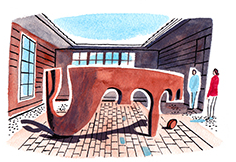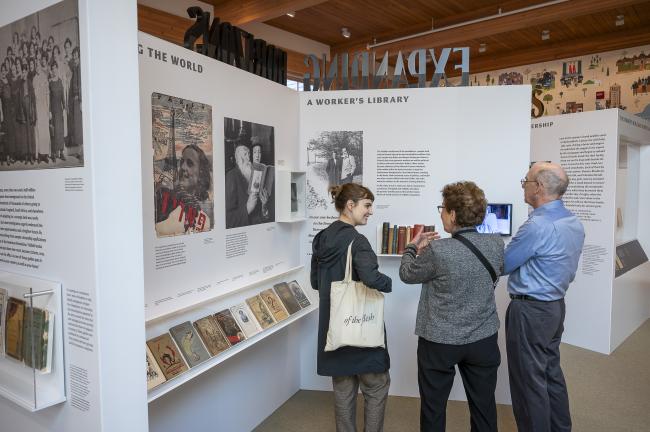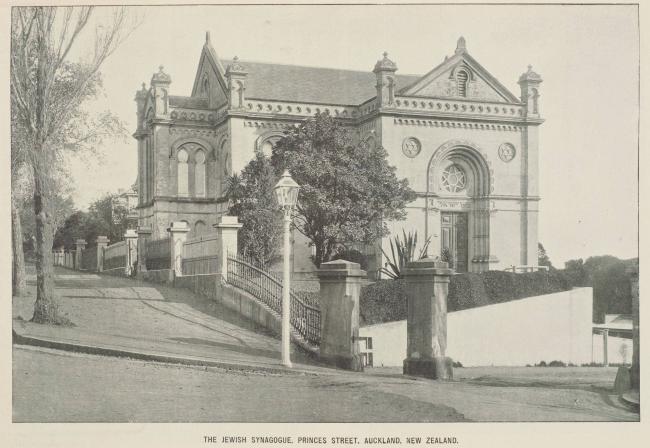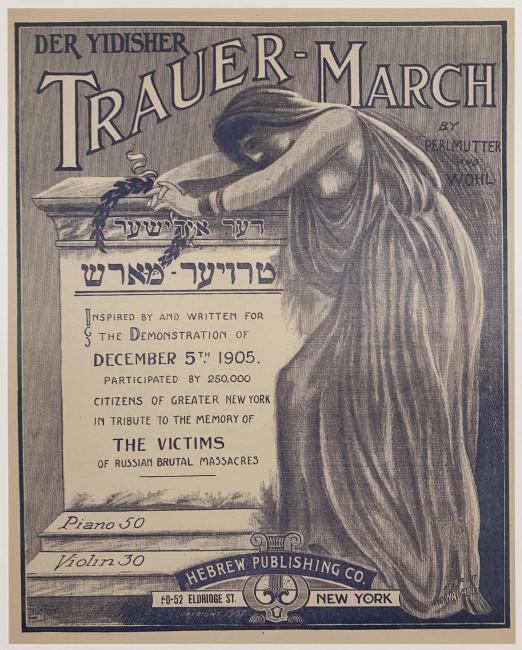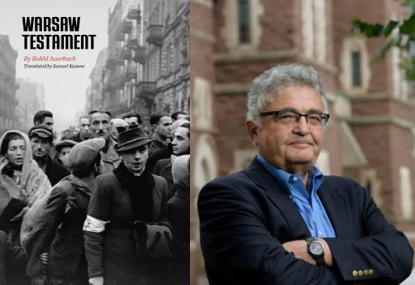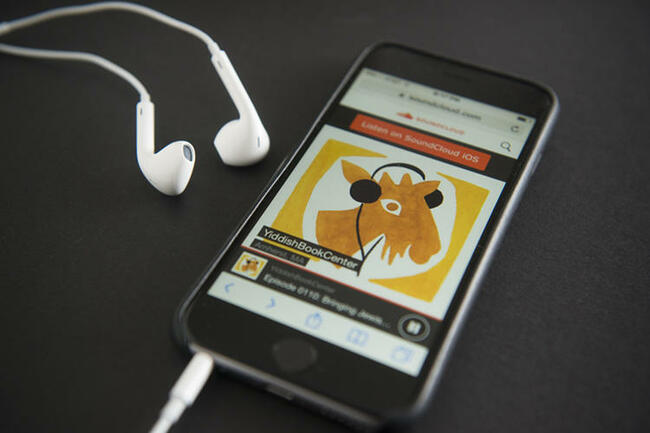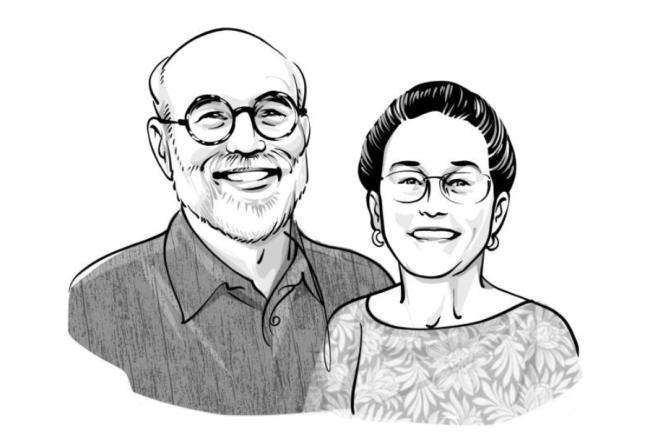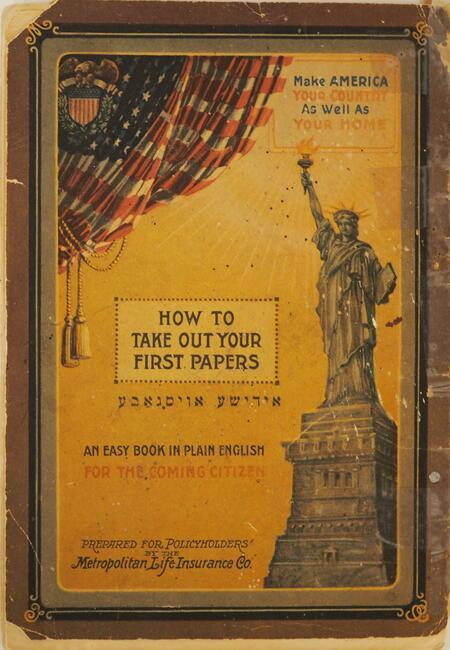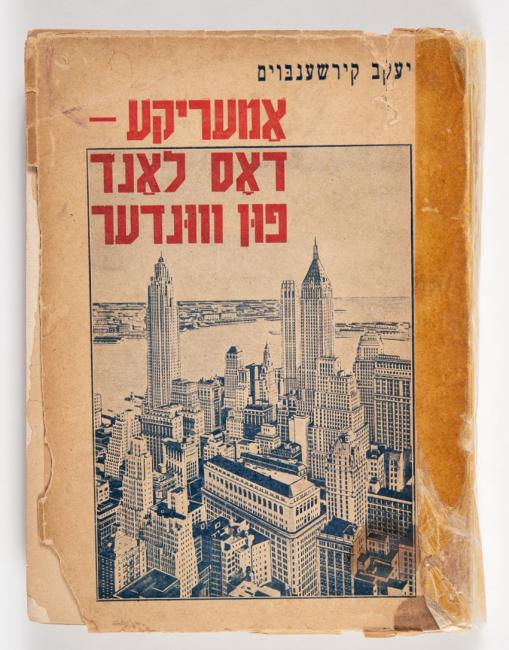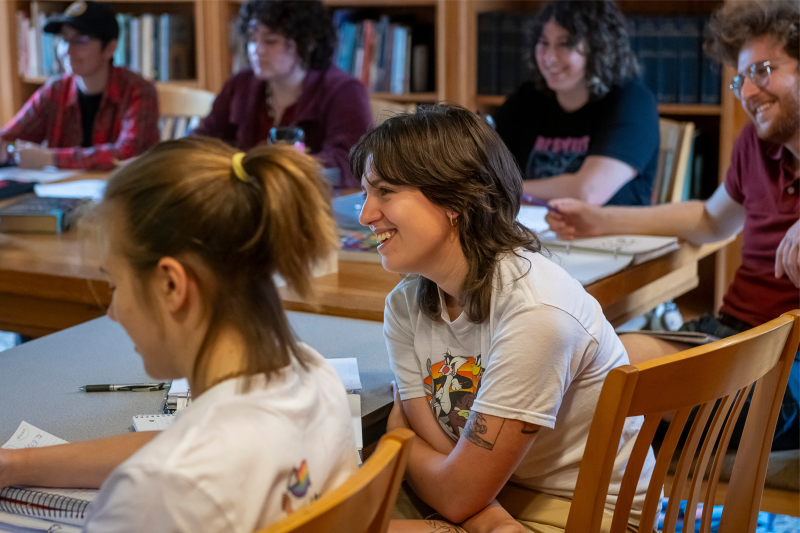
Yiddish Book Center
Celebrating Yiddish Language & Culture
Scroll down
פֿרישע נײַעס Now
ON VIEW | Yiddish: A Global Culture
“New Zealand,” by Peretz Hirschbein, translated by Ryan Mendias
From the Vault | Together in Mournful Protest
2024 Melinda Rosenblatt Lecture | Rokhl Auerbach’s Warsaw Testament, with Samuel Kassow | Sunday, May 5 @ 2:00 p.m. ET, at the Yiddish Book Center & livestreamed
The Shmooze | in a dark blue night: two song cycles on Yiddish/Jewish New York
Donor Profile: Elizabeth Short, MD and Michael Friedman, MD
Support Yiddish Culture!
Your donation will help safeguard our books and support Yiddish literature and culture for future generations.
Focus On Jewish American Heritage Month
May is Jewish American Heritage Month, a time to celebrate and reflect on the contribution of Jews to American life and culture. At the Yiddish Book Center, we’re marking this occasion by diving deep into our collections. Presented here is a carefully curated selection from our materials that highlights different aspects of the Jewish American story that speak to Yiddish culture and beyond. Incorporating a range of resources—from Yiddish books and oral histories to audio recordings and teacher guides—that span all sorts of identities and experiences, we hope that you’ll explore this collection throughout the month and bring it into your classrooms, communities, or even just into your home.
אויסגעקליבן Handpicked Margaret Frothingham
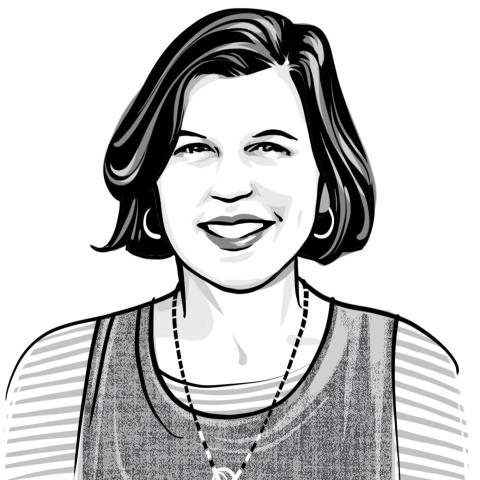
Each month, the Yiddish Book Center asks a member of our staff or a friend to select favorite stories, books, interviews, or articles from our online collections. This month, we’re excited to share with you picks by Margaret Frothingham, the Yiddish Book Center’s Translation and Education Program Manager.
“Vilde khaye!”: Maurice Sendak’s not-so-cautionary tale
A few months ago, I had the stunning realization that there does not exist (yet!) a biography of one of the greatest picturebook writers of all time, Maurice Sendak. On that same day, I stumbled across this article by Ilan Stavans, hoping there was at least something in our collection about him. His parents most definitely spoke Yiddish—vilde khaye or “wild beast,” was the root inspiration for “wild things”—and I’m so curious to learn more about how the language and culture influenced his work. Stavans’ article does a decent job of highlighting the significance of this book in broader culture and the children’s literature field. I particularly like how he connects Max’s journey to otherness “home and abroad” and the implication that we all, tall or small, have beasts inside.
A Gift for Jewish Children
I really enjoyed this recent “From the Vault” article by Caleb Sher about the life and work of Moyshe Levin, pen named Ber Sarin. The piece, which centers on Levin’s children’s stories, opens like any good children’s book: “I’m going to tell you a story.” Levin’s life story, while tragic, provides insight into how children’s authors navigate social and political upheaval throughout history. I appreciate how Levin, unlike his peers, was determined to publish children’s literature, even if it meant remaining “apolitical.” Perhaps Levin saw the power of kid lit to influence young minds (after all, children’s literature is one of the most common conduits for propaganda). I’d argue there’s no truly apolitical kid’s book and that publishing children’s books that “inspire a love of Yiddish” was radical in itself. Levin’s stories sound so playful and clever—I only wish I could read them!
Yiddish Illustrations: “From Chagall to Diego Rivera”
All of the illustrations highlighted in David Mazower’s “Personal Top Ten” are beautiful, but my favorite is number 6, Majn Alef Bejs. Ula Palusinska’s bold and inventive illustrations jump off the page and wonderfully depict the equally charming poems about the alef beys by Yiddish writer Yeshoshue Kaminski. Abecedarians, a fancy term for picturebooks that teach the alphabet, are best when words and images work together to communicate concepts. I can personally attest to this, having recently learned the Yiddish alphabet myself. Majn Alef Bejs features bilingual Yiddish and Polish text, and is one of the many examples of contemporary design that I’ve come across at the Center.
A Room Named Ruth
I found this Pakn Treger article a few years ago after reading Sarah Biskowitz’s thoughtful writeup about Family Snapshots of Yiddish in Cuba. When I saw Ruth Behar’s name pop up in the suggested content, I knew I had to check it out. During the pandemic, when I worked in the Center’s onsite museum store, I read Lucky Broken Girl, a beautiful children’s book by Ruth Behar about a Cuban-Jewish immigrant who learns about her own identity and heritage while convalescing after a horrible accident. Behar’s writing is rich and deeply personal. As a reader it’s easy to feel her sense of longing and her struggle to define home. “A Room Named Ruth” helped me understand more about the history of Jews in Cuba and the complex nature of multicultural identity.
Stay up to Date!
Sign up to receive Yiddish Book Center news, podcasts, features, and oral histories right to your inbox.

